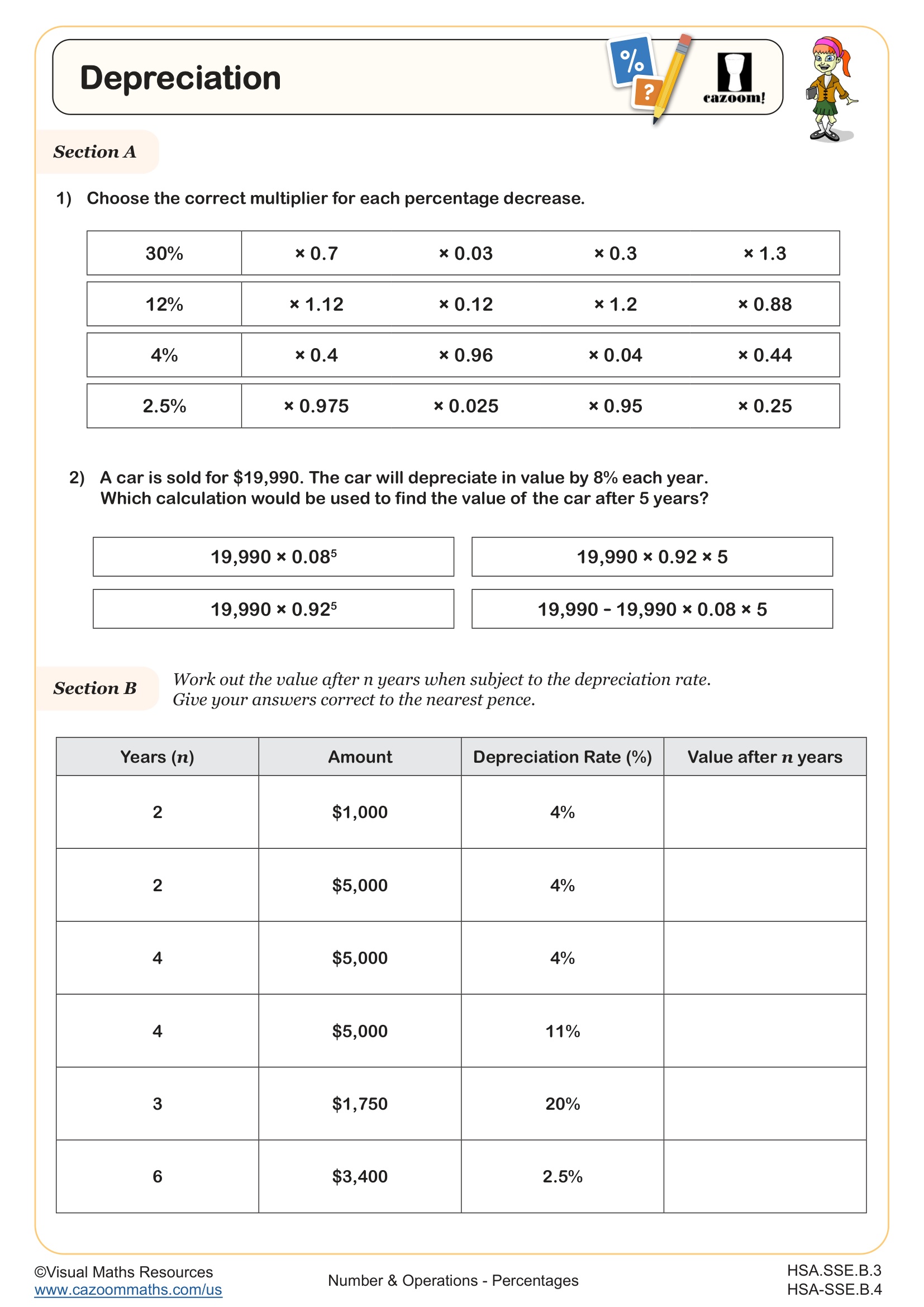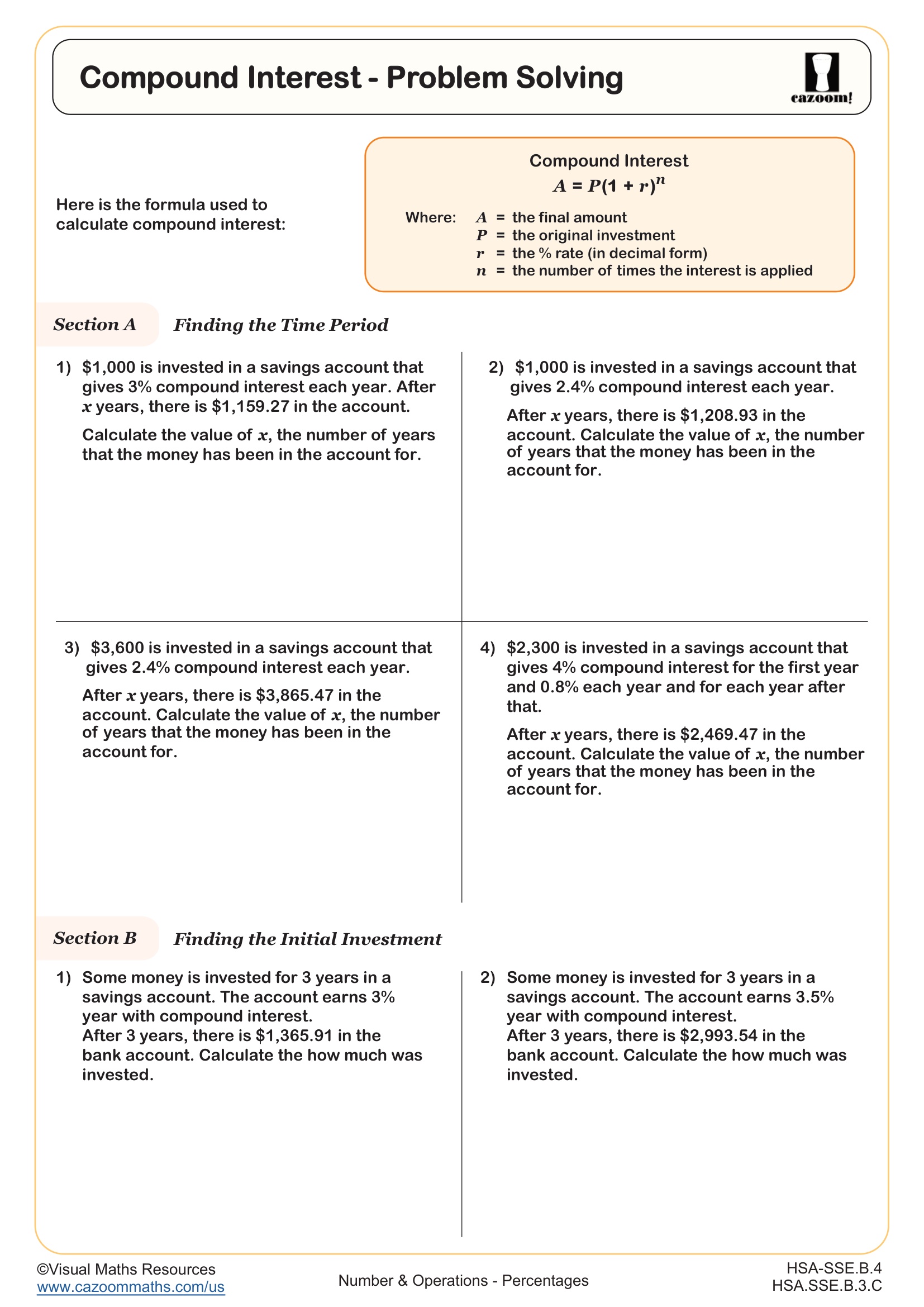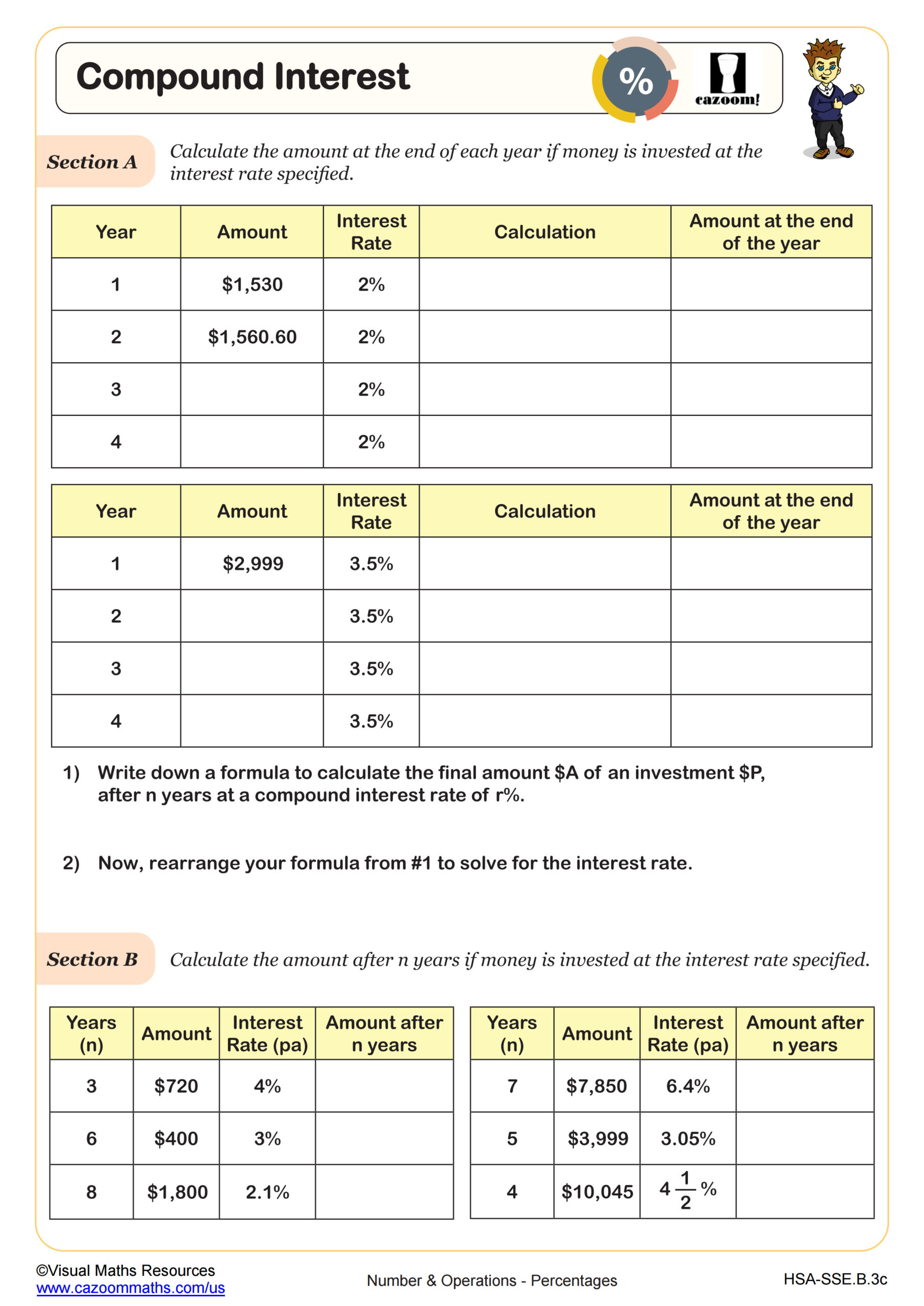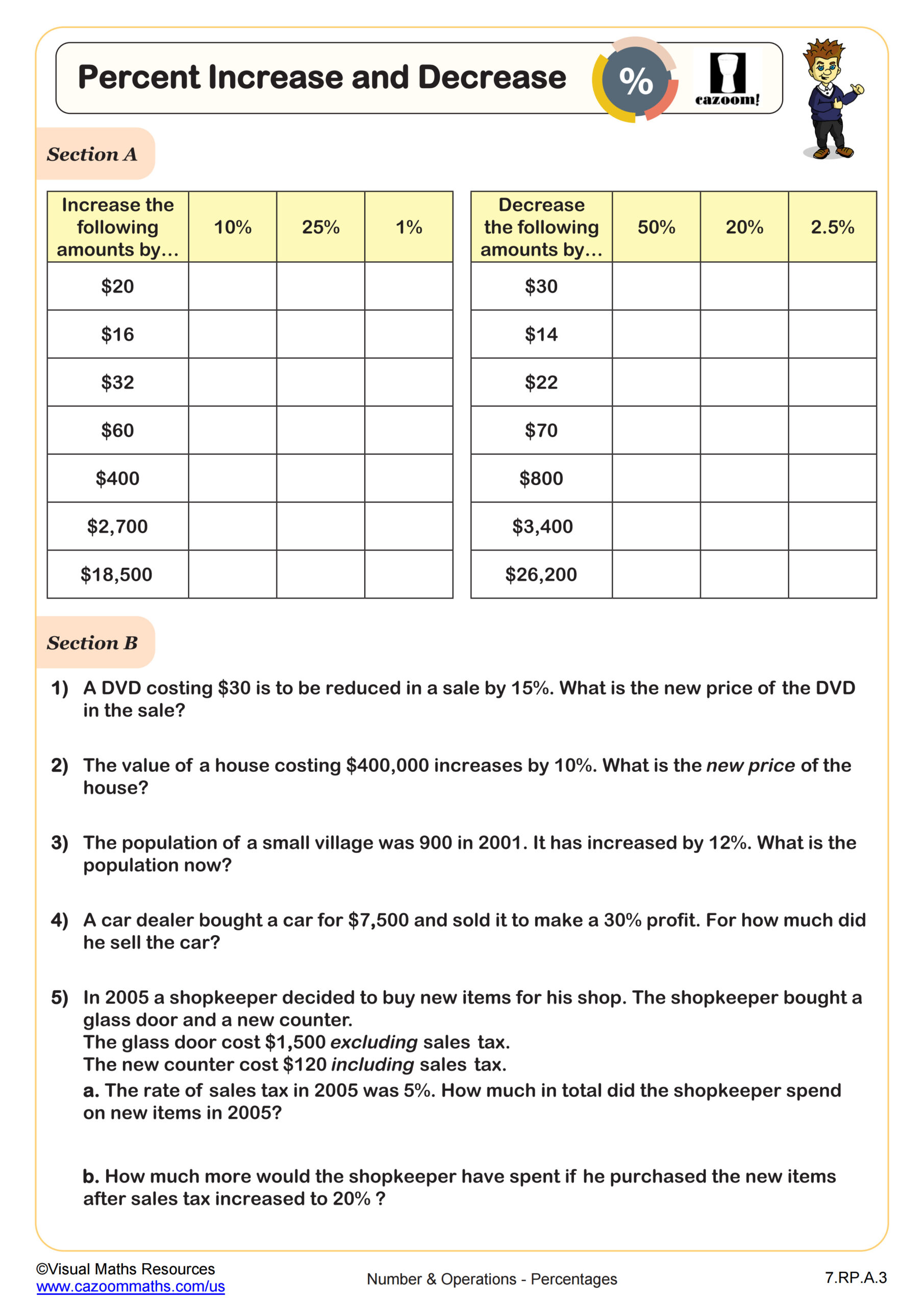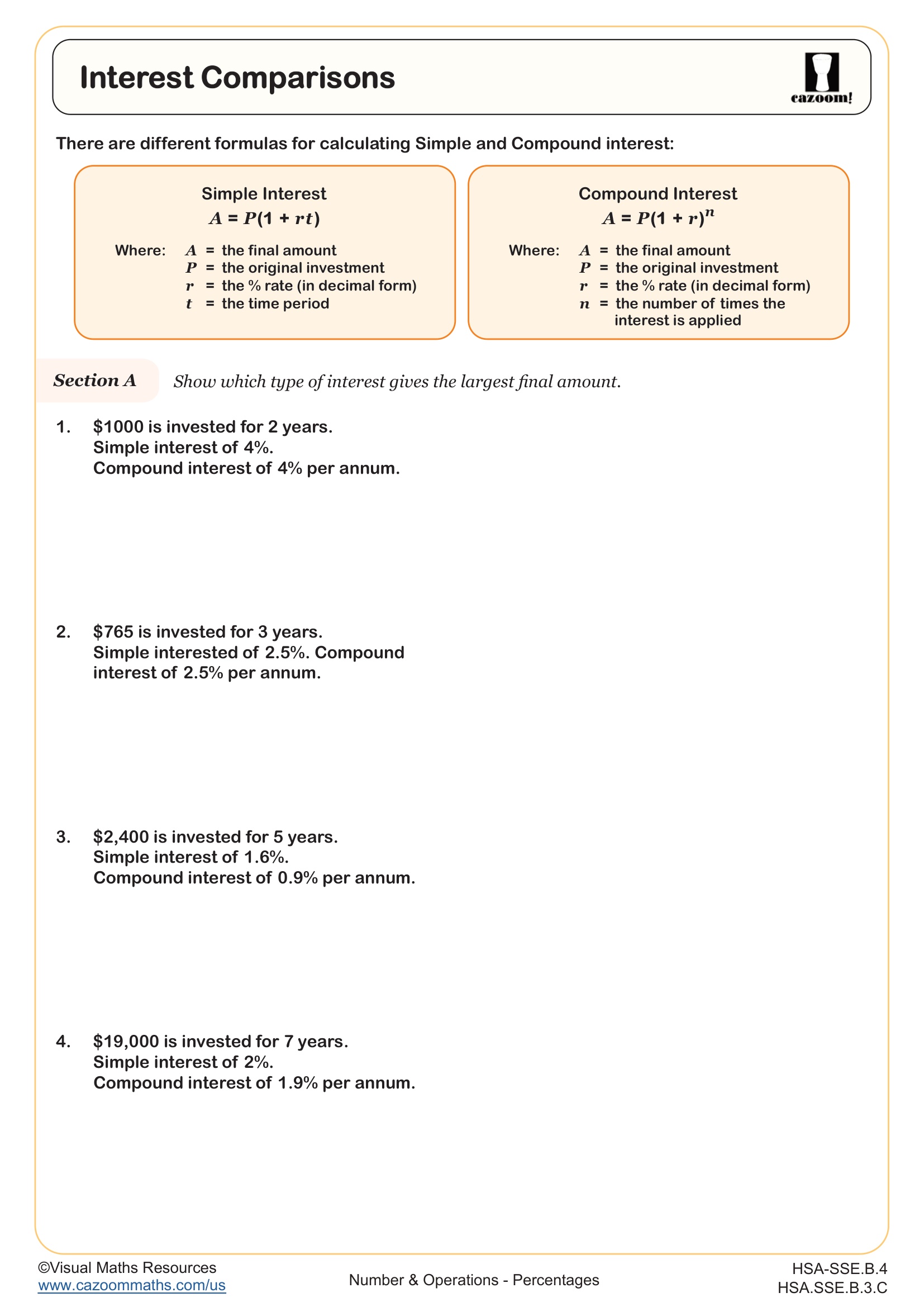Back to:
Depreciation WORKSHEET
Suitable for Grades: Algebra II, IM 2
CCSS: HSA.SSE.B.3, HSA.SSE.B.4
CCSS Description: Choose and produce an equivalent form of an expression to reveal and explain properties of the quantity represented by the expression.★ a. Factor a quadratic expression to reveal the zeros of the function it defines. b. Complete the square in a quadratic expression to reveal the maximum or minimum value of the function it defines. c. Use the properties of exponents to transform expressions for exponential functions. For example the expression 1.15t can be rewritten as (1.151/12)12t ≈ 1.01212t to reveal the approximate equivalent monthly interest rate if the annual rate is 15%
Derive the formula for the sum of a finite geometric series (when the common ratio is not 1), and use the formula to solve problems; for example, calculate mortgage payments.
Derive the formula for the sum of a finite geometric series (when the common ratio is not 1), and use the formula to solve problems; for example, calculate mortgage payments.
Depreciation WORKSHEET DESCRIPTION
Depreciation involves repeated percentage changes and is calculated using a method similar to compound interest. This worksheet guides students through selecting the correct multipliers for various percentage decreases and applying them accurately in depreciation calculations.
Section B features six subtly varied questions, encouraging students to deeply consider how changes in the number of years, amounts, and depreciation rates affect the equations used.
In Section C, learners will identify, explain, and correct a mistake, addressing common misconceptions and reinforcing their understanding.
Finally, Section D solidifies their knowledge with four additional questions, ensuring a comprehensive grasp of the topic.
